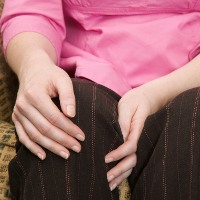
Jakarta, Description
Osteokondritis Disekans is a condition in which a part of the joint cartilage separated from the bone ends together with a thin layer of bone underneath. This disorder most often occurs in young men, especially after joint injury.
The knee is part of the body most often affected than other joints, including shoulders, hips elbows, and ankles. If a piece of loose cartilage and bone remain in place, place adjacent to the separation.
This can slightly alleviate or eliminate symptoms and can often be cured by itself. Treatment by surgery may be needed if the independent cause jams on the movement of joints.
Symptom
Osteokondritis Disekans Signs and symptoms include:
1. Pain, the most common symptom. Can be triggered by physical activity such as going up and down stairs, climbing a hill or a sports game.
2. Locking. Joints may be locked in a certain position when a loose piece of bone wedged in between during the movement.
3. Weak. Sometimes it feels weakened joints.
4. Narrowing the range of motion. Patients may not be able to stretch my legs or hands completely.
5. Swelling and pain. The skin around the joints can become swollen and sore.
Cause
Osteokondritis Disekans caused by decreased blood flow to the tip of the affected bone. Can also be caused due to the pressure of repeated mild. Minor injuries suffered repeated often unconscious and can damage the tip of the affected bone.
There is also the possibility that genetic factors are involved, so that causes some people tend to be more at risk of this disorder.
Treatments and drugs
Treatment Osteokondritis Disekans intended to restore the normal function of affected joints and relieve pain and reduce the risk of osteoarthritis. No single treatment is effective for all people.
In children whose bones are still growing, bone defects can be cured by means plenty of rest.
Therapy
Initially, the doctor will recommend a simple but effective measures in most cases, namely:
1. Resting the joint. Avoid stressful activities such as jumping and running joints. Use crutches for a while, especially if the pain causes fatigue.
2. Physical therapy. Include stretching exercises, stretching and movement exercises that promote muscle strengthening joints.
Operation
If simple treatments do not help enough, surgery may be necessary to remove a loose fragment or reassemble the fragments of bone. The procedure can be used arthroscopically, include fiber optic camera and surgical tools through small incisions around the joint.
Tidak ada komentar:
Posting Komentar